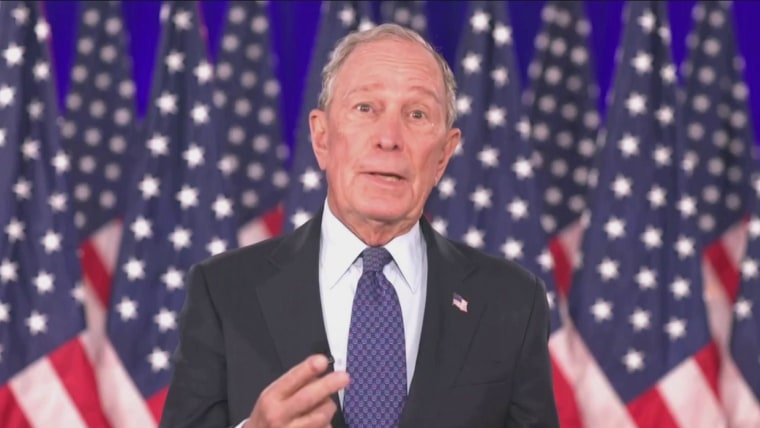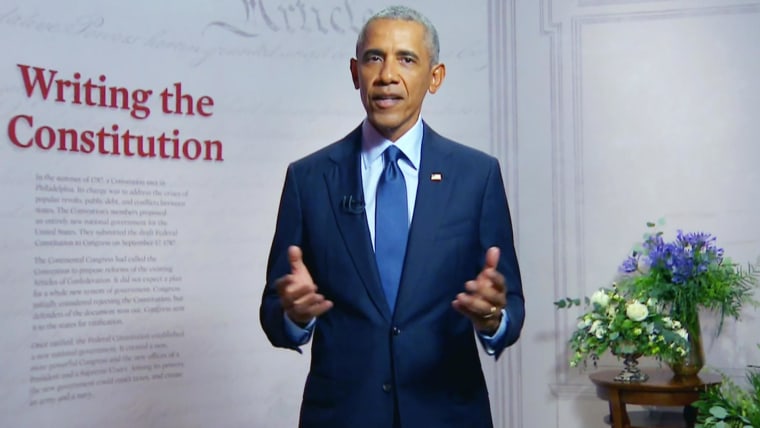In calm times and in times of crisis, the political parties’ presidential nomination conventions have been a fixture of presidential campaigns since 1832. And so, despite COVID-19, the show had to go on in 2020.
This week, for Democrats, it did. In our pandemic-afflicted world, convention planners pivoted and innovated. Speechwriters and speakers who previously strove for witty one-liners to garner applause were forced to try to connect with a totally remote audience in a different way.
What was gained, and what was lost?
In a virtual convention, all spontaneity and reaction was gone: there was no applause — or lack thereof — to render an instant verdict on a speech delivered well or badly. There were no swirling rumors for reporters to track down and to investigate, no protesters to interview. (The press likely hated this new reality.) Even attempts at conveying excitement could easily fall very, very flat — like former New York City Mayor Mike Bloomberg’s awkward fist pump at the end of his remarks, though that was but one example.
On the other hand, though spontaneous applause was out, conversation was in. One of the more memorable lines of the 2020 Democratic National Convention came during President Barack Obama’s speech, when he said, “Donald Trump hasn’t grown into the job because he can’t.” Delivered in a calm monotone, the line would likely have been lost in the boisterous convention hall of years past.
And, for the Democratic National Convention’s finale, fireworks shot into the night sky, enjoyed by some from a parking lot with proper social distancing — replacing the normal balloons and confetti dropped onto a sea of delegates packed in like sardines. Former Vice President Joe Biden and Sen. Kamala Harris, D-Calif., accompanied by their spouses (all masked) watched from an empty stage. Sen. Bernie Sanders, I-Vt., and the other rivals for the nomination weren’t present, as would normally happen, to join hands with the party’s latest standard bearers for the traditional show of unity.
But this was not the first, nor likely is it the last, major evolution of the political convention. Beginning in the mid-20th century, conventions began moving from being unscripted to scripted affairs. Their purpose became less a way to engage in substantive intraparty decision making and more a way to sell predetermined nominees to a national television audience. COVID-19 simply completed that transition to fully scripted conventions meant solely for an external audience.
Historically, though, conventions had been rollicking affairs with no fixed number of days and no predetermined outcomes. In June 1864, the Republicans met in Baltimore and renominated President Abraham Lincoln, even as the Battle of Cold Harbor — one of the bloodiest of the Civil War — was being fought a mere 150 miles to the south. (The Confederates, notably, won.) The Democrats in 1924 established the record for convention longevity, taking 103 ballots over more than two weeks to nominate John W. Davis, who lost badly to Calvin Coolidge.
And largely unknown dark horse candidates — James K. Polk in 1844, Franklin Pierce in 1852 and James Garfield in 1880 — have been known to win nominations at conventions after multiple ballots over several days. (Each of those three won the presidency.)
Garfield’s nomination was particularly out of left field. A little known congressman from Ohio, in giving a nominating speech for a fellow Ohioan at the 1880 Republican convention, felt that the emotions driving the process of a convention were foolish and fleeting. The loud demonstration following the preceding speech for a rival candidate, he observed, reminded him of “a human ocean in tempest … but I remember that it is not the billows, but the calm level of the sea from which all heights and depths are measured.”
He continued, “The destiny of the republic” will be decided “Not here, in this brilliant circle where 15,000 men and women are gathered … but by four millions of Republican firesides, where the thoughtful voters … with the calm thoughts inspired by love of home and country, with the history of the past, the hopes for the future … there God prepares the verdict.” Garfield, though, became the beneficiary of the emotions that he derided: When the convention deadlocked, his own speech led the delegates to turn to him, a non-candidate, and nominate him on the 36th ballot.
Big public acceptance speeches at the convention weren’t even de rigueur until Franklin Delano Roosevelt established the tradition in 1932 — and then broke it as a wartime president in 1944 by delivering his speech to the convention by radio from an undisclosed location. (Later, his location was revealed to have been a Navy base in San Diego, while he was secretly en route to Hawaii to inspect the Pacific Fleet).
The question after 2020 is whether a virtual convention, presented in conversational tone, truly appeals more to undecided and persuadable voters, and whether they are more inclined to watch and listen to a convention in this format.
Conversely, party leaders have to figure out whether the lack of traditional, in-crowd excitement and a reduced lineup turned off the party’s core activists, who thrive on contact with one another and red-meat attacks on the opposition, as those activists are the ones who must take the lead in the coming campaign. (The progressive wing of the Democratic Party, for instance, denounced the lack of prominent speaking roles given to its leaders, such as Rep. Alexandria Ocasio-Cortez, D-N.Y., apparently in order to showcase disaffected Republicans.) No doubt, post-convention polls will give us some answers to these questions.
And now, America just waits to see how President Donald Trump — the master showman who thrives before a live audience — will fare with a virtual Republican National Convention, his greatest asset taken away from him just as everyone is watching.













